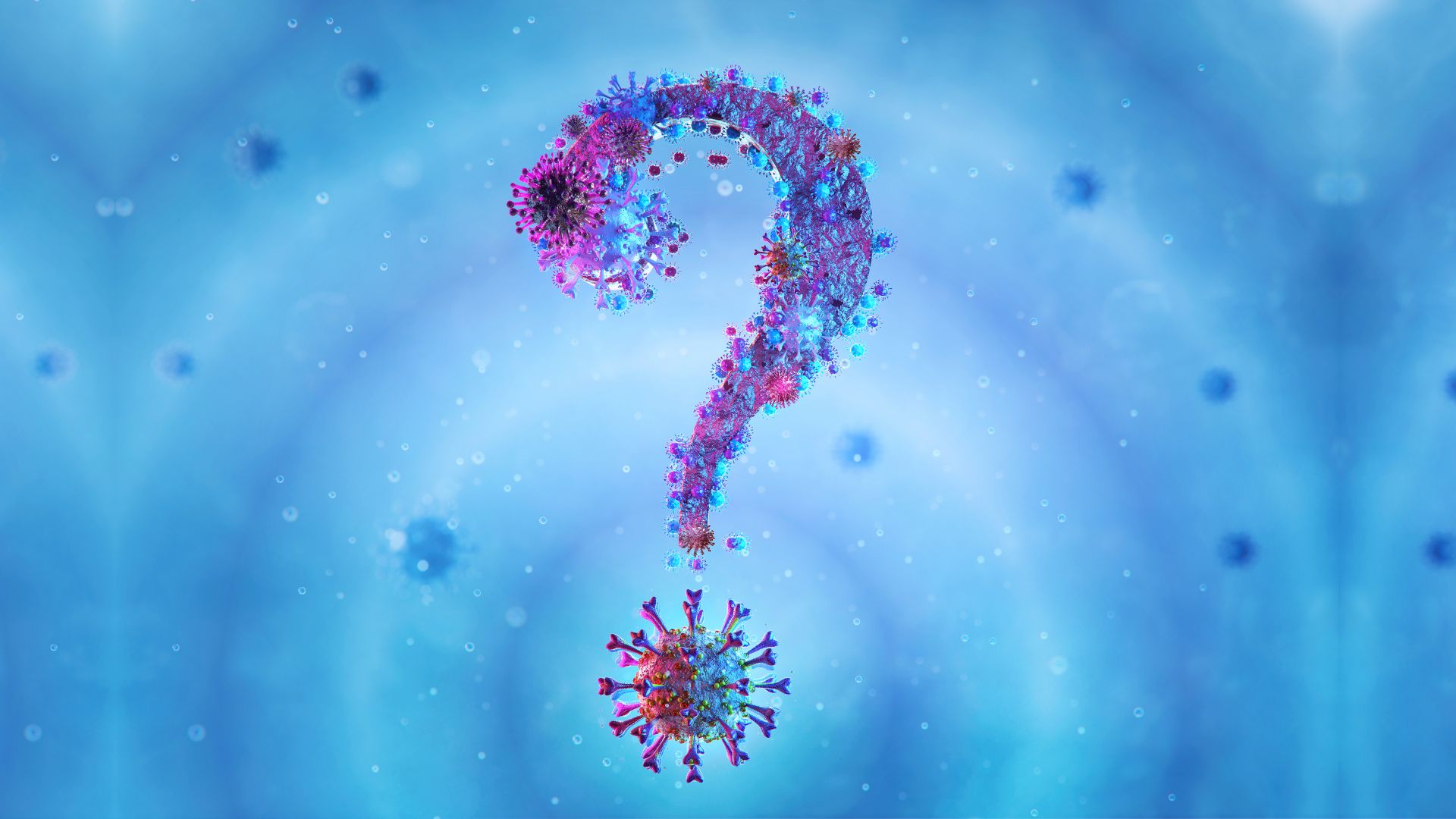Long Covid. Chronic Covid. Post Covid. Long-haulers symptoms. Over the past two years, we’ve learnt that the fiery comet head of COVID-19 can come with a long tail of impact. Perhaps for the first time in our human history, the long-term effects of a short-term disease are being so thoroughly researched all over the world by such a large number of scientists, using such advanced technology, and with such numerous subjects.
However, the concept of Long Covid also raises a broader question. If we can have Long Covid, can we also have long versions of other supposedly short diseases? What about Long Malaria? Long Pneumonia? Long Shingles?
A look at Long Covid
When people first started reporting symptoms after the acute stage of covid had passed and they were testing negative, the initial response of the medical community was to label it as either ‘anxiety’ if the patient was young and particularly female, or as ‘natural aging’ if the patient was elderly. Not only did doctors dismiss the post-Covid symptoms of the general public, they also dismissed the post-Covid symptoms of their fellow healthcare workers. Then the research began and the results started coming in—first in a trickle and then in a torrent.
COVID-19 has been generally viewed as a severe acute respiratory disease caused by the SARS-CoV-2 coronavirus. Long Covid refers to its after-effects, which can be broad in nature, evolving, and continue for an indefinite time. Mayo Clinic defines it as “an inflammatory or host response towards a virus that occurs approximately four weeks after initial infection and continues for a yet uncharacterized duration.” One meta-analysis looking at 14 to 110 days after infection listed 55 Long Covid symptoms, with the most common ones being fatigue, headache, attention disorder, hair loss, and shortness of breath.
Another study involving patients six months after ‘recovery’ found “functional mobility impairments, pulmonary abnormalities, mental health disorders.” Other studies also refer to brain fog, cognitive dysfunction, loss of taste and smell, pain in muscles and joints, depression, autoimmune diseases, and neurological impairments. A recent 2023 review says the following: “More than 200 symptoms have been identified with impacts on multiple organ systems. At least 65 million individuals worldwide are estimated to have long COVID, with cases increasing daily.”
Such after-effects of covid should not have been a surprise to the medical community given the documented after-effects of previous pandemics.
Long-Term effects of 1918 Influenza Epidemic and other illnesses
After the 1918 Influenza Epidemic, many people suffered for weeks, months, and years. And some were never quite the same again. Fatigue, insomnia, and depression were common post-flu symptoms. Admissions in psychiatric hospitals increased significantly for six years following the pandemic. People born during or just after the 1918 flu pandemic were on average slightly shorter as adults, and, some 60 years later, they showed a greater incidence of heart disease and diabetes.
Given the past documented long-term effects of the 1918 Flu, not to mention SARS and MERS, and the current well-researched COVID-19, long-term effects of other illnesses seem not only plausible but probable.
The discovery of Long Covid has led to the recent development of the term “post-acute sequelae of Covid-19” (PASC) — a medical term for the lingering after-effects of COVID-19. And by association, we’ve seen a renaissance of older, more general, terms such as ‘post-acute sequelae’ (PAS) and ‘post viral syndrome’.
The PAS of some illnesses are easy to believe because they affect the same primary organ and present similar symptoms as during the acute stage – only much later in life. Early childhood Pneumonia can result in adult conditions of lung function deficits as well as “an increased risk of adult asthma, non-smoking related COPD, and bronchiectasis.”
Tuberculosis comes in two forms: active or latent. This means we can carry the tuberculosis bacteria within our body and it becomes active when our immunity is low. This can happen years or even decades into our life. Shingles is defined as an acute viral infection, but it could be said to be chronic on two counts. First, after the rash has disappeared, the pain can linger on for months or even years. And second, even once all symptoms are gone and the patient is said to have recovered, “the virus remains latent in the dorsal root ganglia.” And so, similar to tuberculosis, shingles can recur, even years later, in times of stress.
The PAS of other illnesses are more difficult to accept because they are more varied.
Malaria is a parasitic mosquito-borne disease and has been found to be complex in its progress. After the mosquito bite, it can have an incubation period alone of anywhere from six days to one year before any symptoms show. Then, there is chronic malaria, which can continue for years. We seem to think that we have an illness and an infection only as long as we have a fever—but a silent infection can linger. Chronic malaria causes anemia, increased susceptibility to other infections, and even maternal complications. Furthermore, children who get the more dangerous version, cerebral malaria, have been shown to suffer from lifelong neurological issues such as “cognitive, motor skills, and visual coordination impairment, as well as seizures and attention deficit hyperactivity disorder.”
Dengue is a viral mosquito-borne disease. It is lesser known than malaria but equally or more prevalent. And since it is lesser known in the western world, dengue is relatively under-researched. Its febrile period is about a week, but its PAS—body pain, fatigue, and depression—continue much longer. Most studies did follow-ups for only a maximum of six months. But a Cuban study covering two years actually showed an increase in fatigue after the one-year mark.
A study looking at patients who had had Ebola more than two years earlier found they still struggled with impairment of vision, hearing, swallowing, sleeping, and arthralgias as well as memory loss, mental confusion, and chronic health problems.
For more than the past 50 years, research has shown how viral infections in general can have a long lasting impact. A 1970 study showed that neonatal virus infection in mice affected their behavior and weight, which in turn affected their aging process. A 1985 study showed exposure to viral infections in utero increased risk of cancer and diabetes in adulthood. And now it’s known that acute infections of respiratory and gastrointestinal systems can initiate long-term inflammatory disorders.
Even a condition very limited in time and space like burns can have a “long lasting impact on the quality of people’s lives, with persisting problems related to scarring, contractures, weakness, thermoregulation, itching, pain, sleep, body image and psychosocial wellbeing.”
Three hurdles seem to be limiting our imagination to see these illnesses in their entirety and therefore our complete treatment of them: we seem desperate to see all illnesses as short duration, implying fully curable; if illnesses cannot all be curable, then we want to at least neatly categorize them as acute versus chronic; and we wish to clearly allocate each illness to a single organ.
How long is long?
We like to see people as either well or sick. And if we’re going to be sick, we want to be sick only for a limited and well-defined number of days. So we haven’t wanted to think of the long-term effects of diseases. But unfortunately, they exist. With coronaviruses, a study found fatigue in 60% of so-called recovered patients at the 12-month mark. With dengue, a study found clinical symptoms in patients two years after infection. With SARS, a study found fatigue in 40% of the subjects at the four-year mark. And the 12 months, 2 years, and 4 years did not signify the end of the PAS – merely the end of the studies.
How long is “long”? Why should a disease that has somehow remained active in the body for so long suddenly subside at the 4-year mark? It may not work in accordance with our hope, our calendar, nor our attention span. A 2021 study of post viral syndrome shows how the viral load and inflammation often subside immediately after the acute stage but then gradually increase years later, bringing in their wake old and new symptoms. Some posit that the 1918 Flu may have been responsible for the surge in coronary disease in the 1960s—some 40 years later.
Doing longitudinal studies of 10, 20, or even 40 years requires time, money, a long attention span, not to mention a historical bent. And we’ll have to wait to do truly long-duration studies of COVID-19. But in the meantime, we would be unhelpful and irresponsible to dismiss patients’ post-illness symptoms just because we can’t prove them, we don’t understand them, or we don’t yet have research evidence. What we don’t yet know about diseases and medical science will fill many textbooks in the future. We need to be humble and open-minded.
Rethink “acute” versus “chronic” and “single system” versus “multi system”
We also like to neatly categorize things. With illnesses, our practice has been to categorize them into chronic and acute. A chronic illness is slow developing and long lasting: like diabetes or hypothyroidism. An acute illness is sudden in onset and short in duration: like a broken bone or a heart attack or influenza (flu). But a broken bone can be the result of slowly evolving osteoporosis and a heart attack can be the result of plaque slowly building up in the blood vessels. And even a flu can have long PAS.
Perhaps there are no such distinct categories as acute and chronic. Perhaps it’s more of a spectrum. And perhaps one leads to another. An acute condition can be the result of a chronic illness. And what begins as an acute infection may have a chronic avatar. And furthermore, that chronic avatar may or may not be identical to the original disease.
We are prone to thinking of one illness as affecting one organ or, in other words, a single system. But this perspective is being questioned. Many autoimmune diseases—and even diabetes and hypertension—are now viewed as multisystemic.
Furthermore, Dr. Barbara Starfield, a physician and an academic, has said that many diseases themselves are not distinct entities, but rather heterogeneous entities, which are all associated with each other. She gave the example that “people with hypothyroidism are four times more likely to have rheumatoid arthritis and cardiovascular diseases.” Dr. Debby van Riel, a virologist at Erasmus University in the Netherlands, sees even the flu as a multisystemic disease that affects not just the respiratory tract but many parts of the body.
And while COVID-19 is thought of as primarily a respiratory illness, Long Covid is considered “a multisystem disorder that commonly affects the respiratory, cardiovascular, and hematopoietic systems,” not to mention the neurological, cognitive, and musculoskeletal systems.
A recent German study gives a list of over 25 ‘non-persistent viruses’ and an even longer list of their associated PAS. These PAS concern not only the primary infection organ, but also various other organs – making the long-term effects multisystem in nature.
Getting a fuller picture
The reason we’re not getting the full picture of illnesses is primarily due to our refusal to see it. And our refusal to see the full picture is contributing to the partial treatment and persistence of such illnesses, not to mention the frustration and continuing disability of patients.
A 1939 study said the following: “Malaria is a chronic disease, not alone an infection of the blood stream characterized by chills and fever”. And yet, even today, the World Health Organization (WHO) labels malaria as “an acute febrile illness.” That 1939 study also warned that “Failure to comprehend or detect its insidious course and its strong tendency to relapse, even after months or years, accounts for the fact that it still ranks as one of the serious social and economic problems.” And yet an article in the Lancet just last year was titled “Malaria: (still) a global health priority.” A 1987 study presented the term ‘post-viral syndrome’ and hoped that “awareness of the syndrome will lead to an increase in its diagnosis in general practice”. More than three decades on, we’re still waiting.
In the spirit of optimism, our society likes to see diseases as short, clearly defined, and easily curable. Speedy onset, obvious symptoms, crisp diagnosis, a magic potion, and fast resolution. Long-term chronic conditions that do not arrive in a dramatic fashion, that have no clearly visible symptoms, and that dribble on are – let’s face it – boring. Doctors lose interest and sometimes even the families lose interest. The patients may not lose interest but they get exhausted by their struggle to be heard and believed over a course of weeks, months, and sometimes years. But with such myopic and dismissive behavior, we will continue to see only the fiery heads of the comets and miss their debilitating long tails. And in doing so, we’re failing to fully treat these diseases and we’re doing a huge disservice to the sufferers of PAS—leading to economic costs to our society as well as costs in lives only partially lived.
If we are to fully and effectively manage the long tail of diseases, we need an evolution in the perspective of the academic research community as well as the practicing medical community to view illnesses more holistically both in terms of time, encompassing years, and space, encompassing multiple body systems.
Today, we can use the unprecedented opportunity thrown up by the current discovery of, attention to, and momentum concerning Long Covid to finally do three things: ignite researchers to look into the long-term effects of other illnesses, convince medical practitioners to accept the possibility that seemingly short-term diseases can have long-term consequences, and help millions of patients to attain more complete treatment and support, giving them the opportunity to live fuller lives.
The views expressed in this article are the author’s own and do not necessarily reflect Fair Observer’s editorial policy.
Support Fair Observer
We rely on your support for our independence, diversity and quality.
For more than 10 years, Fair Observer has been free, fair and independent. No billionaire owns us, no advertisers control us. We are a reader-supported nonprofit. Unlike many other publications, we keep our content free for readers regardless of where they live or whether they can afford to pay. We have no paywalls and no ads.
In the post-truth era of fake news, echo chambers and filter bubbles, we publish a plurality of perspectives from around the world. Anyone can publish with us, but everyone goes through a rigorous editorial process. So, you get fact-checked, well-reasoned content instead of noise.
We publish 2,500+ voices from 90+ countries. We also conduct education and training programs
on subjects ranging from digital media and journalism to writing and critical thinking. This
doesn’t come cheap. Servers, editors, trainers and web developers cost
money.
Please consider supporting us on a regular basis as a recurring donor or a
sustaining member.
Will you support FO’s journalism?
We rely on your support for our independence, diversity and quality.







Comment